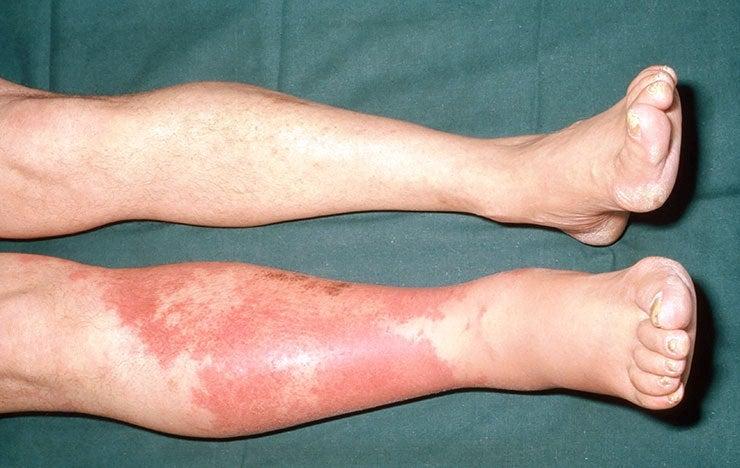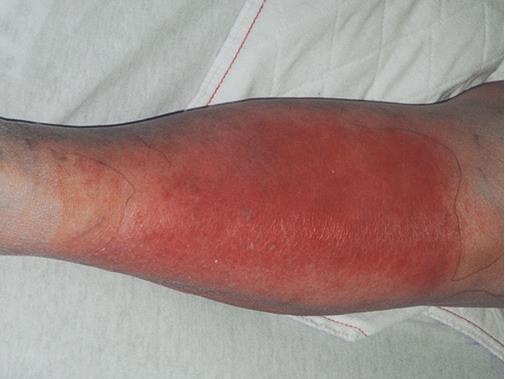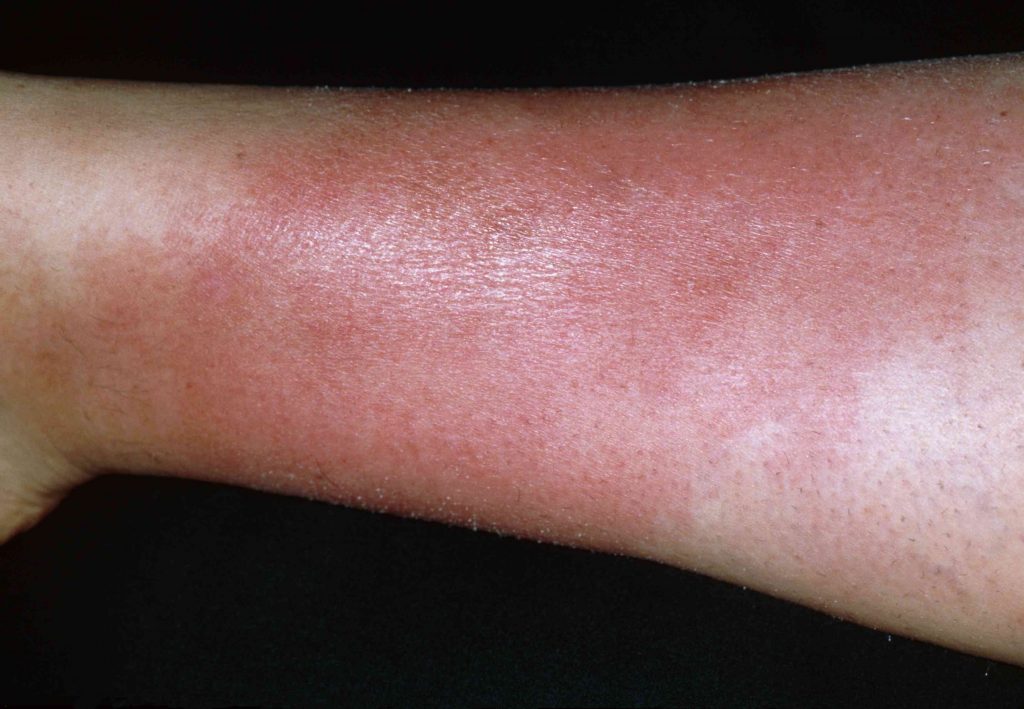
What are erysipelas and cellulitis?
These acute infections of the dermis and subcutaneous tissue are usually caused by S.
pyogenes. other bacteria, such as S. aureus, may be involved, particularly in the
immunosuppressed or those with diabetes. Erysipelas involves the dermis, whereas
cellulitis affects the deep dermis and subcutaneous tissues. Both are a common cause
of hospital admission.

What predisposes to erysipelas/cellulitis?
• Defective skin barrier, e.g. eczema, tinea pedis, leg ulcers, wounds.
• Diabetes or immunosuppression.
• Chronic lymphoedema. Local immune deficiency predisposes to cellulitis, but each
episode damages the lymphatics, which increases the predisposition to recurrence.
• Peripheral vascular disease.
• Previous episodes of cellulitis.
What should I look for?
• Sudden onset of pain.
• Malaise, fever, and rigors may precede a rash but may not be apparent in the elderly.
Systemic symptoms are common in erysipelas.
• Asymmetrical, warm, tender spreading erythema that is particularly well demarcated
in erysipelas; swelling sometimes with blisters.
• Examine both the unaffected and affected limbs for evidence of chronic
lymphoedema, but signs may be subtle. lymphoedema of the lower limb, to aplasia or
hypoplasia of lymphatic vessels, may be subclinical and bilateral.

What simulates erysipelas/cellulitis?
• Acute contact dermatitis: the patient usually complains of itch. Early in the
presentation, the skin may not be particularly scaly but will be erythematous and
oedematous. Blisters are common.
• Dermatitis 2° to venous stasis or asteatotic dermatitis. Typically, cellulitis is
asymmetrical. Reconsider your diagnosis if the patient seems to have ‘cellulitis’
affecting both legs. The redness, scaling, and swelling are much more likely to be a
manifestation of dermatitis.
• Lipodermatosclerosis, a panniculitis associated with venous stasis.
• Herpes simplex infection, particularly a 1° infection.
• Erysipeloid.
• Eosinophilic fasciitis.
• Eosinophilic cellulitis (Wells syndrome).
• Autoinflammatory diseases.
What should I do?
• Superficial skin swabs for culture are not helpful, unless there is an open wound or
an exudate. Remember no chronic leg ulcer is sterile.
• Take blood for culture if the patient has systemic symptoms. Bacteraemia is
common in erysipelas.
• Prescribe antibiotics, initially IV, e.g. ceftriaxone or flucloxacillin and penicillin.
• Elevate the affected part.